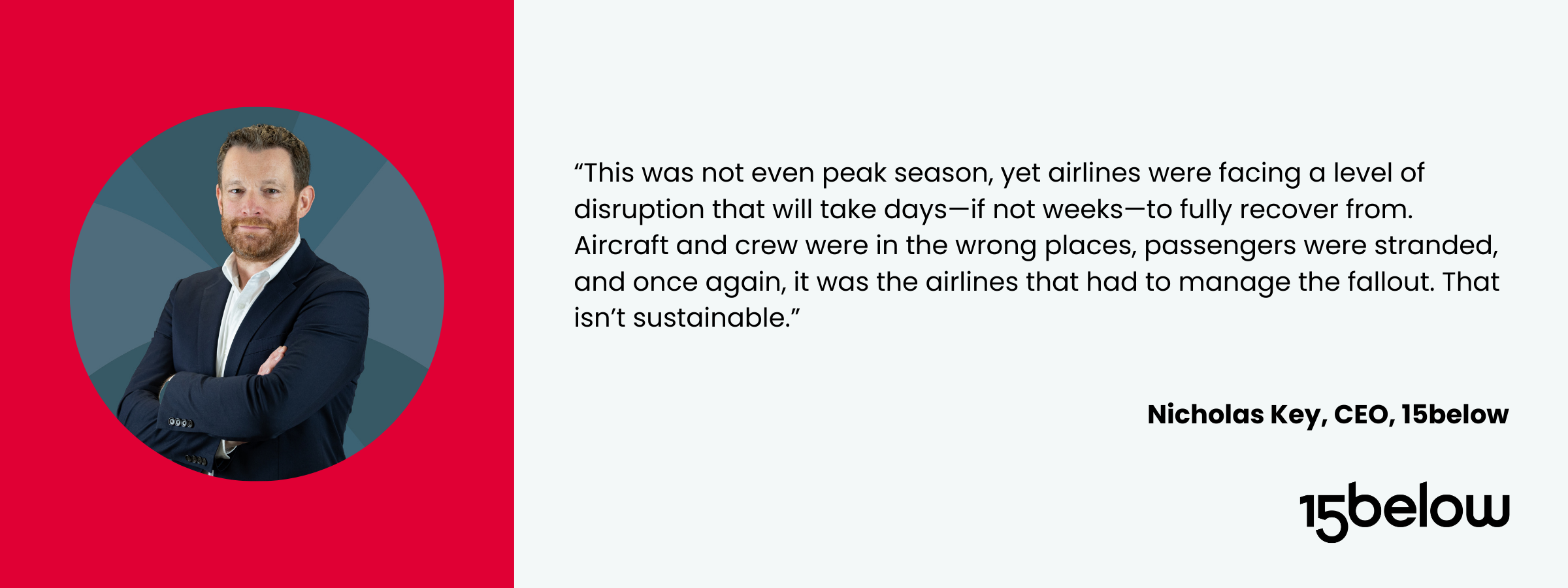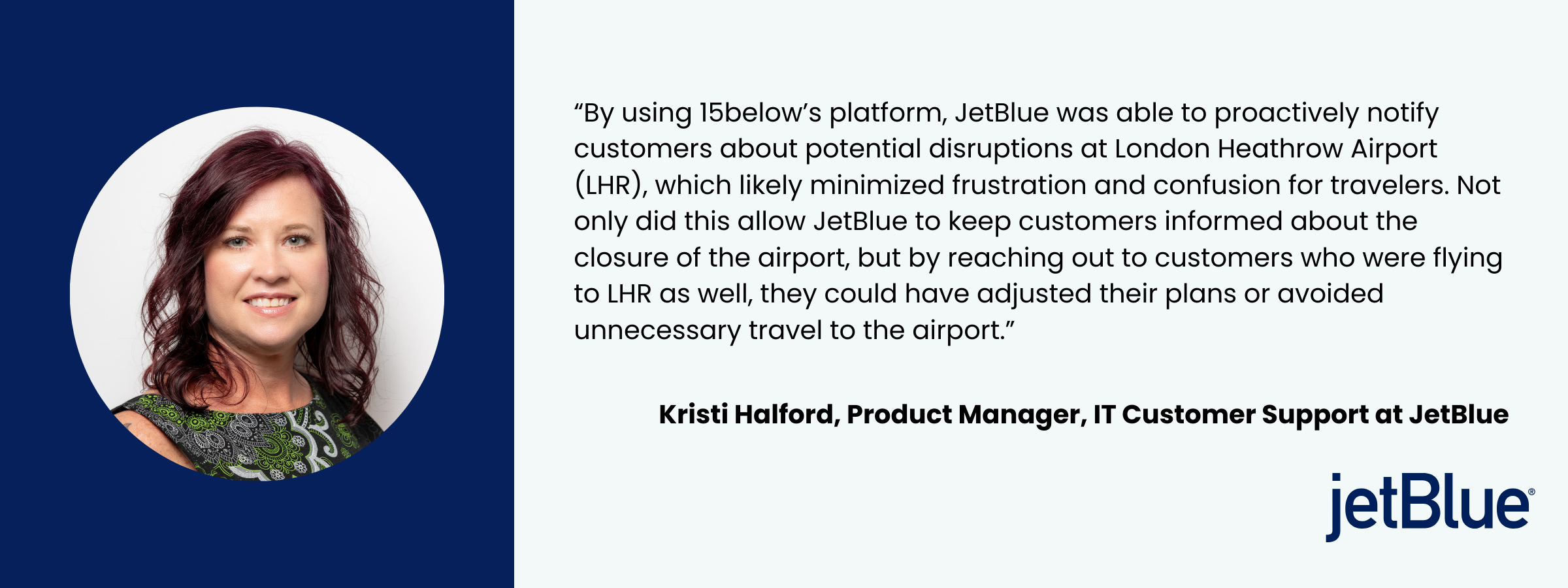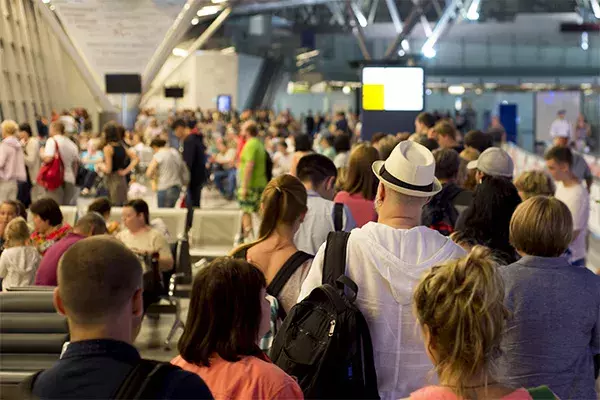25 March 2025 | Blog
2025 Heathrow shutdown: Are airlines really to blame?
25 March 2025 | Blog
2025 Heathrow shutdown: Are airlines really to blame?
On 21 March 2025, London Heathrow airport was set to handle 1,351 flights and nearly 300,000 passengers, but a power outage caused by a fire at a nearby electrical substation forced mass cancellations and left thousands stranded globally. Airlines had to act fast, working around the clock to rebook flights, reposition aircraft and crew, and manage an overwhelming surge in customer queries looking for answers.
Passengers were understandably frustrated. But let’s be clear: airlines did not cause this disruption. So why were they the ones left to fix it?
The real cost of system failures at Heathrow
This shutdown was just the latest example of an industry struggling to cope with failures outside airlines’ control. Last year’s CrowdStrike outage grounded over 5,000 flights worldwide, costing Delta Airlines alone $500 million. The financial toll of Heathrow’s closure is yet to be fully determined, but it is expected to run into the tens of millions of dollars.
Nicholas Key, CEO at 15below, believes the aviation industry needs to rethink how responsibility is shared:

As the UK’s busiest airport, the impact of the closure was felt globally. Airlines such as Royal Air Maroc and Virgin Atlantic were forced to reroute flights via Gatwick and Glasgow, while Saudia advised passengers against travelling to Jeddah or Riyadh for onward connections to London. Days after the closure, airlines are still working to recover.
Airlines are doing more than ever—but what about the rest of the industry?
Airlines are investing in technology to improve disruption management - not just for passengers, but for their own teams, from frontline staff to operations control. Partnering with companies like 15below, they’re using automation to minimise the impact of disruptions, to keep passengers informed and prevent customer service teams from being overwhelmed when disruptions do inevitably strike.
The scale of this effort was clear during the Heathrow shutdown. 23 of 15below’s airline customers operate at Heathrow, meaning its closure triggered emergency response plans across all of them. Between midnight and 8am, British Airways alone sent over 120,000 notifications through the 15below platform - a 2,000% increase from the previous week - as it worked to update passengers on cancellations, rebookings, and alternative travel arrangements in real time. Lufthansa Group airlines sent nearly 50,000 additional notifications that morning, while other carriers, including TAP Air Portugal, Malaysia Airlines, and JetBlue, also relied on 15below to help manage the surge in passenger communications.
Kristi Halford, Product Manager at JetBlue, explained how they were able to respond quickly and keep passengers informed:

By automating updates across multiple channels, 15below helped airlines maintain control of the situation, keeping passengers informed and reducing the pressure on call centres.
Who should take responsibility?
While airlines are doing their part, the question remains: why is the burden of recovery falling solely on them?
‘The industry pulls together in a crisis, but we cannot keep expecting airlines to absorb the financial and brand impact of failures they did not cause. If the entire supply chain doesn’t step up, these disruptions will only become more frequent.’
Nicholas Key, CEO, 15below
The Heathrow shutdown is just the latest reminder that the aviation industry is under strain. With passenger numbers rising and expectations increasing, the need for resilience has never been greater. Airlines have made huge strides in improving their response to disruption—but they cannot do it alone.




